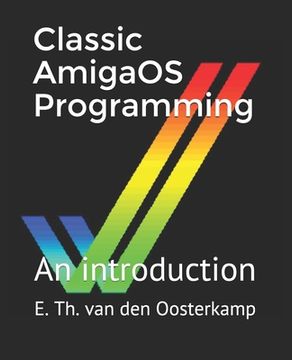Share
Classic AmigaOS Programming: An introduction
Edwin Th Van Den Oosterkamp
(Author)
·
Independently Published
· Paperback
Classic AmigaOS Programming: An introduction - Van Den Oosterkamp, Edwin Th
Choose the list to add your product or create one New List
✓ Product added successfully to the Wishlist.
Go to My Wishlists
Origin: U.S.A.
(Import costs included in the price)
It will be shipped from our warehouse between
Monday, June 24 and
Wednesday, July 10.
You will receive it anywhere in United Kingdom between 1 and 3 business days after shipment.
Synopsis "Classic AmigaOS Programming: An introduction"
The Commodore Amiga is known for the great capabilities it introduced at the time of its launch. These capabilities are down to the Amiga's custom hardware as well as it's graphical pre-emptive multitasking operating system, now usually referred to as the classic AmigaOS. The beauty of the classic AmigaOS is that it provides most of the things one would expect of a modern graphical pre-emptive multitasking operating system, but at the same time the OS is lean enough for the programmer to understand what is going on under the hood. This book provides an introduction into the programming of the classic AmigaOS using C as well as assembly language. It is aimed at programmers who have not programmed for the Amiga before as well as programmers who did this years ago and would like a refresher before diving back in. A general knowledge of computer programming is therefore assumed. The first chapters provide information on setting up programming software on a classic Amiga. The chapter about the 68000 processor will provide an overview of the processor's inner workings and instructions. The chapters about Exec, Intuition, GadTools, ASL, Graphics and Diskfont will explain the usage of these libraries and the functionality they provide. The use of files, directories as well as low-level disk access is detailed in the DOS and Trackdisk chapters.
- 0% (0)
- 0% (0)
- 0% (0)
- 0% (0)
- 0% (0)
All books in our catalog are Original.
The book is written in English.
The binding of this edition is Paperback.
✓ Producto agregado correctamente al carro, Ir a Pagar.

